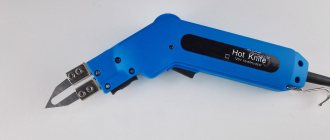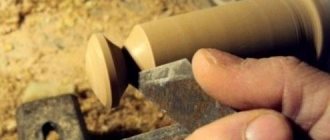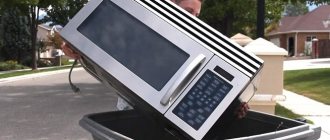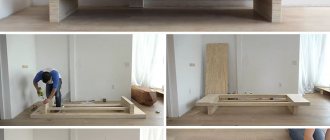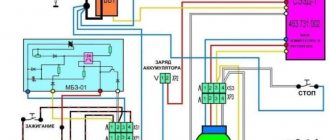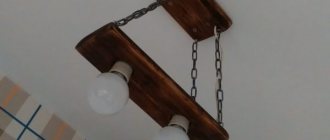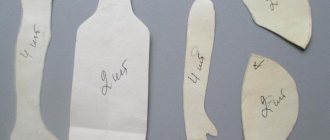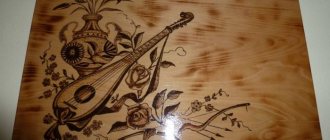This article will discuss the fourth state of matter – plasma. However, please note that before repeating this invention, please read the warning below carefully.
Disclaimer: If you intend to replicate this invention, please be aware of the following risks: The device uses dangerous high voltage current to operate. In addition, the final product may emit small amounts of X-rays. I will not be responsible for damage to property or persons while repeating this training material.
Operating principle of a plasma cutter
When the power source is turned on, current begins to flow into the working area into the internal chamber of the plasma cutter, where the electric pilot arc between the nozzle tip and the electrode is activated. The forming arc fills the nozzle channel, where an air mixture begins to flow under high pressure, which, due to the high temperature of 6000-8000 °C, heats up greatly and increases in volume from 50 to 100 times. Due to the internal shape of the tapering nozzle, which has the shape of a cone, the air flow is compressed, heating up to an outlet temperature of 25,000 - 30,000 °C, forming a plasma jet that cuts the processed blank. Moreover, the initially activated pilot arc goes out and the working arc between the electrode and the metal product is activated. The resulting products from the effects of plasma combustion and metal melting are removed due to the force of the jet.
Fig. 1 Carrying out metal cutting operations where cutting or welding of a product is necessary, using a hand-made homemade one or a professional plasma cutter.
The optimal indicators for the workflow are:
- gas supply at speeds up to 800 m/sec;
- The current indicator can be up to 250 - 400 A.
Scheme 1. Drawing of the plasma cutting process of the workpiece.
A manual plasma cutter assembled using an inverter is mainly used for processing workpieces and is characterized by its low weight and economical power consumption.
Features of routine maintenance
Most often, a tool plate that experiences significant thermal loads fails. This is not a malfunction of the table. When choosing the type of plate, take into account the prevailing thickness of the metal being cut. For cutting thick (over 40 - 50 mm) sheets, preference is given to plates of different heights, since in this case the contact of the heated metal of the workpiece with the surface of the plate occurs over a limited area. For plasma cutting of thinner workpieces, you can use straight plates that are more easy to install.
Chinese breakthrough
And again, Chinese Wuhan burst into the top scientific news. But this time the Chinese have outdone themselves. Far Eastern craftsmen have constructed a plasma engine from an ordinary microwave oven and an electric pump. And he even made money.
In fact, everything is very serious. Researchers from Wuhan University, led by engineer Dan Ye, published an article on May 5, 2020, in which they described a working prototype of a plasma engine. There were no hair-raising physics, complex formulas and dubious gravitational effects.
The operating principle of the experimental setup is outrageously simple. The compressor supplies air under pressure into a quartz tube to which a waveguide is connected. At one end of which there is a 1 kW magnetron - the same device without which we could not heat food in the microwave. With the help of the 2.45 GHz radiation it generates, the supplied air is heated and ionized. The result is plasma, which is then diverted into a “jet nozzle” - a quartz tube with a diameter of 24 mm.
Since we have a “microwave” attached to one end, the resulting installation is cooled with water. Without this important detail, the Chinese would risk getting a high-plasma electric grill.
The experiment turned out to be super successful. Using the created thrust, the Chinese made a one-kilogram steel ball, which they attached to the end of an improvised nozzle, bounce. Having extrapolated a little from the resulting figures—lift of 28 N/kW and pressure of 24 kN/sq.m—the authors came to a serious conclusion: an air plasma jet engine of their type could be “a viable alternative to a conventional fossil fuel jet engine.” Triple combo: there will be no need to burn petroleum products, pollute the atmosphere with carbon, and we will also save the Earth’s climate from overheating.
Well, of course, we can say that it was for the sake of the latter that everything was started - a conspiracy of Chinese Atlanticist ecologists, no less. But in reality everything is much sadder.
Plasma engines in operation
Although most plasma engines are still limited to laboratories, some have been actively flown and used on missions. In 2011, NASA, in partnership with aerospace company Busek, launched the first Hall effect engine aboard the Tacsat-2 satellite. The engine was the main propulsion system of the satellite. The company has since launched another Hall effect engine in 2011. As technology advances, the flight time of plasma thrusters is likely to increase.
In May 2022, a team from the Institute of Technological Sciences of Wuhan University published a paper on a prototype plasma jet device they had developed that could lift a 1 kg (2.2 lb) steel ball above a 24 mm (one inch) diameter quartz tube. The thrust required to achieve this lift is equivalent to the relative thrust of a commercial aircraft engine. In the design, compressed air is introduced into a chamber and exposed to over 1,000 degrees Celsius and microwaves to create ionized plasma, which is then released to create movement.
Drive and control systems
Due to the specific nature of the operations performed, mainly mechanical drives are installed on metal plasma cutting units. This eliminates thermal deformation of machine parts when cutting metal, and increases the accuracy of the cut contour.
To move use:
- Rack and pinion transmissions. They provide high positioning speed, but have the lowest accuracy, since they wear out intensively over time. Installed on budget versions of plasma cutting machines;
- Linear drives based on stepper motors. They guarantee the greatest accuracy in moving the sheet being cut, but do not have great power and efficiency in working out the trajectory;
- Linear drives based on synchronous DC motors, installed on powerful plasma metal cutting units.
- Drives based on conventional asynchronous motors, which are used for light workloads.
Recently, direct linear actuators have begun to be used for movement, the action of which is based on the direct conversion of electrical energy into mechanical energy. Such systems are more durable, since they do not have wearable elements in the circuit, and are characterized by the greatest efficiency. Their disadvantage is their high price.
Control is carried out from CNC systems, divided into pulse and digital (analog systems, due to their limited performance, are used less and less). Pulse systems are more cost-effective, but have reduced noise immunity. Digital control systems operating from specially developed programs are the most functional.
A short excursion into physics
To begin with, it is worth noting that any rocket engine tends to eject weakly ionized plasma from the nozzle. Regardless of its type. But the “classical”, true plasma engines are those that accelerate the plasma due to electromagnetic forces exerted on charged particles.
The process is complex. Any electric field that accelerates charges in a plasma imparts total impulses of equal magnitude to electrons and ions. It is not necessary to go into these details. It is enough to know that impulse is a quantity that measures the mechanical movement of a body.
Since plasma is electrically neutral, the sum of all positive charges is equal in magnitude to the sum of negative ones. There is a certain period of time - it is infinitely small. In these few moments, all positive ions receive a powerful impulse. The same one is sent in the opposite direction - to the negative ones. What happens? The total impulse is ultimately zero. This means that cravings do not arise.
This is the conclusion: for the electrical “acceleration” of the plasma, it is necessary to separate unlike charges. The positive ones will accelerate when the negative ones are taken out of range. This is difficult to do, since Coulomb attractive forces restore electrical equilibrium, arising between plasma clumps of opposite charges.
And how did you manage to implement this principle of operation in a plasma rocket engine? Due to magnetic and electrostatic fields. Only in the second case the unit is traditionally called ionic, and in the first case it is called plasma.
Device
All modern designs of machines for plasma cutting of metal are equipped with coordinate tables. This makes it possible to position the sheet being cut simultaneously along two coordinate axes. A coordinate table is a unit with the help of which the portal head and/or workpiece is moved along a certain path. It consists of the following sub-assemblies:
- Frames with vibration supports, which are the supporting element of the table. It is equipped with a device for changing the height of the tool lattice (or plate) plate, which serves to secure the workpiece.
- Elements of the portal frame drive mechanism.
- A vacuum or mechanical type clamping device designed to fix the workpiece.
Coordinate table for plasma cutting of metal
The most common are two-axis tables, although some designs of plasma cutting equipment provide for the possibility of changing the spatial orientation of the workpiece; then they talk about three-axis work tables.



